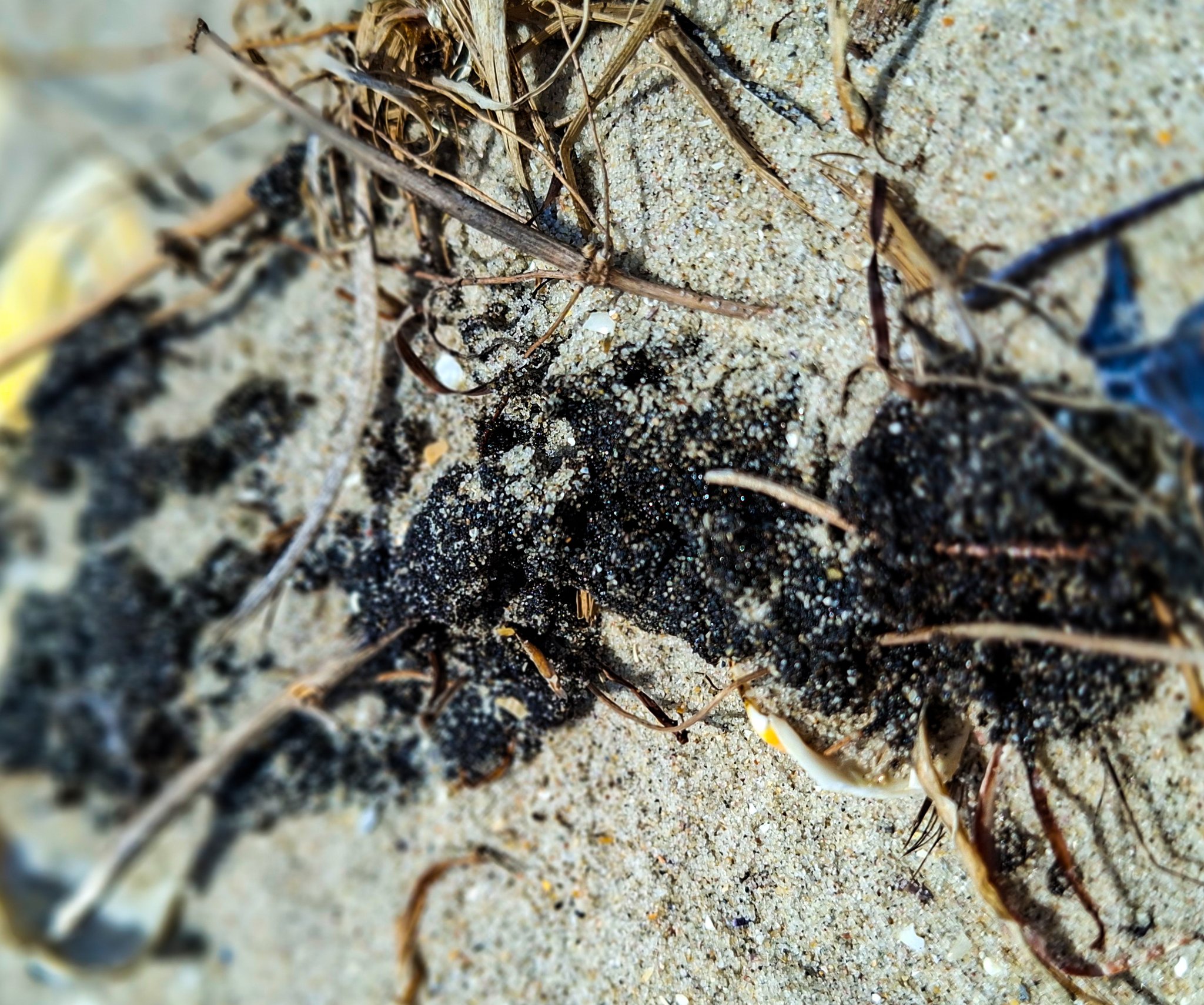On the spit near the Danube Biosphere Reserve, residues of fuel oil from the accident involving Russian tankers near the Kerch Strait have been detected again.
This was reported by Doctor of Biological Sciences Ivan Rusev.
On a section about 200 meters long, over 100 kilograms of fuel oil residues were found. Some of the substance had been collected earlier, but a significant portion remains hidden under the sand and occasionally surfaces due to wind and waves.
“We found an area approximately 200 meters long, where there were several thousand fragments ranging in size from one centimeter to six centimeters. The fuel oil has been there since January and February,” Rusev noted.
Particular concern is raised by the potential reaction of the fuel oil to rising temperatures. According to the ecologist, the substance begins to dissolve in the water and enters the food chains of marine organisms, up to dolphins.
After the ecologist’s public statement, municipal services from the Lyman community and the environmental inspection arrived on site and collected about 25 kilograms of fuel oil. However, Rusev believes the cleanup was incomplete and plans a follow-up inspection of the area.
The State Environmental Inspectorate of the South-Western District stated that “information about hundreds of kilograms of uncollected fuel oil is not true.” According to the inspectorate, the main mass was collected back in February, and the new traces are the result of natural processes bringing residues from deeper layers of sand to the surface.
Residues of fuel oil regularly appear on the coast of Odessa region after the accident that occurred on December 15, 2024, near the Kerch Strait. Two Russian tankers — Volgoneft 212 and Volgoneft 239, built in the 1950s — were damaged during a storm. As a result, over 4,000 tons of fuel oil spilled into the sea.





















